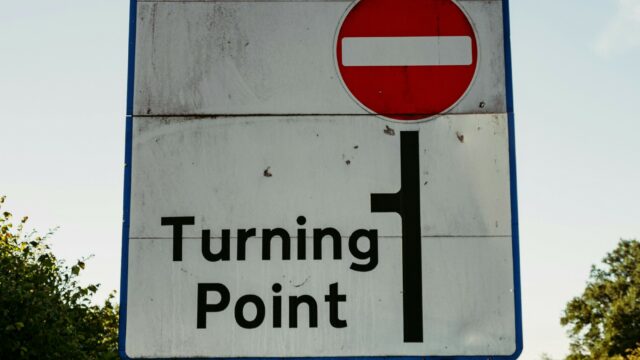Will the capital markets finance the green economy?

The capital markets are pulling in one direction, but financing our future low-carbon economy requires them to push in another. Why is this happening and how it might change?
Consider some numbers for a minute.
Work by the Carbon Tracker Initiative estimates that last year listed fossil fuel companies spent £427bn on developing new reserves of oil, coal and gas – despite the fact we can’t burn all existing reserves to stand a good chance of limiting global warming to 2C, the internationally agreed goal. In the words of Carbon Tracker founder Mark Capanale, this means that “over the next 10 years these companies will be tapping pensioners in the UK and the US for around $7 trillion to expand the fossil fuel sector”.
At the same time, estimates for the amount of investment Britain needs to attract to build a low-carbon economy range from £200bn over the next 10 years to £1tn over the next 20. Yet on current trends we are due to fall well short of this.
So what key issues have been raised by the inquiry so far, and what are the prospects for change?
Investment in the old fossil fuel economy
One of the key drivers behind investment in the fossil fuel economy is that many institutional investors, such as those that manage our pensions, invest ‘passively’ in ‘tracker’ funds which aim to replicate the composition of stock markets like the FTSE 100. Because these are dominated by oil, gas and mining companies, a lot of our money goes here by default.
Over the last few years, however, a powerful new meme has emerged suggesting this is actually a risky strategy. That is, if policy makers ultimately restrict fossil fuel use then these fossil fuel investments could fall in value. You can read more on this here.
To date though, this argument has had a limited impact on investment funds, many of whom are reluctant to adopt a more active management approach and divest from fossil fuels. In evidence given to MPs in June, David Russell of the UK’s second largest pension fund (the Universities Superannuation Scheme), explained this was due to two beliefs within the industry: first, that policy-makers will not actually restrict fossil fuel use in a way that will significantly affect asset values, and second, that clean energy technologies are not yet as mature as we need them to be.
You don’t have to agree with these perspectives to appreciate that they are a major barrier to change.
Investment in the new green economy
There is more reason for optimism when looking at investment in low carbon infrastructure. For example, global investment in renewables reached $269bn in 2012.
One reason for this is that it’s easier for individual Governments to provide certainty for specific renewable projects within their jurisdiction than it is for them to disincentivise investment in mutlinational fossil fuel companies whose returns are based on global operations.
In terms of renewables the UK has achieved a great deal over the last few years through schemes like the Feed-in-tariff which provide reliable long-term revenue streams. These have attracted utility and private equity for large-scale wind farms, and individual and community investment for smaller wind and solar projects. As a result, renewables now provide 11% of our electricity.
In addition, the recently established Green Investment Bank (GIB) is starting to play an important role in accessing further investment from the capital markets. Pension funds, for example, will not generally finance higher-risk construction activities, but will more willingly become involved once renewable projects are built; in turn releasing utility capital for reinvestment elsewhere. The GIB is facilitating this process through co-investment of its initial £3bn capitalisation.
Yet despite all this, GIB Chief Executive Shaun Kingsbury estimates the UK is still only attracting 40-50% of the capital needed each year to build a low-carbon economy.
“ Politics is simply failing to deliver the certainty the markets need to change direction. Until we see clearer global action on climate change, perhaps in Paris in 2015, many investors won’t take talk of stranded carbon assets seriously.”
First, and perhaps most obviously, there’s only so much money to go round. There is huge competition for capital, between countries, sectors, and visions of the future, and whilst the lion’s share still flows into fossil fuels, it’s difficult to see how the full amounts needed for green infrastructure can be delivered.
Second, politics is simply failing to deliver the certainty the markets need to change direction. Until we see clearer global action on climate change, perhaps in Paris in 2015, many investors won’t take talk of stranded carbon assets seriously. And in the UK, investors think our government is currently heading in a high-carbon direction as much as a low-carbon one. Whilst this remains the case investment in job-creating green industry will be held back.
Third, many investors are currently focussed on the wrong kind of risk. Specifically, the Carbon Tracker Initiative suggests that the fact most funds are managed to perform well against a market benchmark is simply not good enough when there is a systemic threat to the market as a whole. Instead, investors should be assessing the risk to their asset and portfolio values in different carbon-constrained scenarios.
What next?
In reality there is little the inquiry can do to resolve high-level political inaction on global carbon emissions or to change the mixed messages currently being given out by the coalition government on the green economy. Instead the most valuable approach may be to focus on specific, practical recommendations that stand a good chance of being implemented, such as actions to increase transparency around the financial risks posed by the markets’ current trajectory.
But here’s a different proposal. Let’s look beyond the capital markets altogether. The recent emergence of financial innovations such as crowdfinancing now offer all of us the chance to invest our money directly in low-carbon projects built at scales we can relate to and which achieve decent inflation-linked returns in the process. In other words, we can start to plug the green finance gap ourselves.
Sam Friggens is a writer in low-carbon energy and alternative finance with Abundance Generation and energy analyst.
This article is republished with permission. The original is available here


